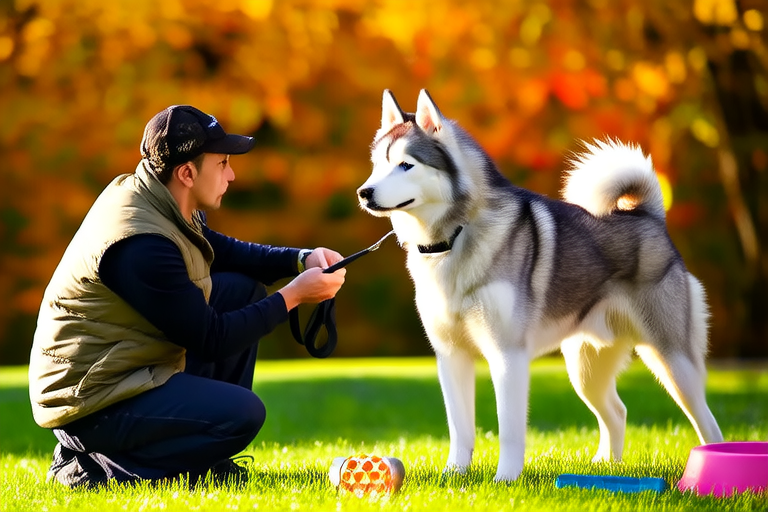How to Train Your Siberian Husky Like a Pro
Siberian Huskies are known for their striking blue or multi-colored eyes, thick fur, and friendly nature. However, these dogs are also notorious for being independent and stubborn. Training a Siberian Husky requires patience, consistency, and a good understanding of their behavioral traits. This article will guide you through effective training techniques, understanding their behavioral traits, establishing leadership, consistent positive reinforcement methods, handling common challenges, and providing real-life tips for successful husky training.
Understanding Siberian Husky Behavioral Traits
Siberian Huskies are descendants of sled dogs and have been bred for endurance and strength. They are naturally pack-oriented and thrive in environments where they can interact with other dogs. Their independence and problem-solving skills are also notable traits, which can make training them a bit challenging. Understanding these traits is crucial for effective training.
Establishing Leadership
One of the most important aspects of training a Siberian Husky is establishing yourself as the leader of the pack. Dogs are hierarchical animals, and they need to know who is in charge. This does not mean being aggressive or harsh; it means being firm, consistent, and confident. Siberian Huskies respect leaders who are calm and assertive. It’s important to set clear boundaries from the start and to be consistent with your commands.
Basic Obedience Training
Basic obedience training is the foundation of any dog’s education. For Siberian Huskies, this includes commands like ‘sit,’ ‘stay,’ ‘come,’ and ‘heel.’ Start by teaching your Husky simple commands using treats as rewards. Keep training sessions short and fun to maintain their interest. Once your Husky has mastered the basics, you can move on to more advanced commands.
Consistent Positive Reinforcement Methods
Positive reinforcement is one of the most effective ways to train a Siberian Husky. This involves rewarding good behavior with treats, praise, or playtime. It’s important to reward your Husky immediately after they perform the desired behavior. This helps them associate the action with the reward and encourages them to repeat the behavior. Avoid using punishment, as it can lead to fear and aggression.
Socialization
Siberian Huskies are social animals and benefit greatly from proper socialization. Expose your Husky to different people, animals, and environments from an early age. This will help them become well-adjusted and less likely to exhibit fear-based behaviors. Socialization also helps prevent aggression towards other dogs or people.
Exercise Needs
Siberian Huskies are high-energy dogs that require plenty of exercise. A lack of physical activity can lead to destructive behaviors and excessive barking. Ensure your Husky gets at least 60 minutes of vigorous exercise each day. This could include running, hiking, or playing fetch. Providing them with opportunities to run and explore will help keep them happy and healthy.
Mental Stimulation Strategies
In addition to physical exercise, Siberian Huskies also need mental stimulation. These dogs are intelligent and enjoy solving problems. Puzzle toys and interactive games can provide mental stimulation and prevent boredom. Training sessions can also serve as a form of mental stimulation, keeping your Husky engaged and interested.
Handling Common Challenges
Training a Siberian Husky comes with its share of challenges. One common issue is escaping. Siberian Huskies are known for their ability to escape from yards and even open doors. To prevent this, ensure your yard is securely fenced and consider installing a top rail on the fence to prevent jumping. Another challenge is leash pulling. Teaching your Husky to walk calmly on a leash requires patience and consistency. Use a head halter or a front-clip harness to discourage pulling.
Real-Life Tips for Successful Husky Training
- Be patient: Training a Siberian Husky takes time and patience. Don’t get discouraged if progress seems slow.
- Stay consistent: Consistency is key when training a Husky. Use the same commands and rewards every time.
- Make training fun: Keep training sessions short and engaging to maintain your Husky’s interest.
- Use positive reinforcement: Reward good behavior with treats, praise, or playtime. Avoid punishment.
- Be mindful of their energy levels: Siberian Huskies need plenty of exercise. Make sure they get enough physical activity to prevent destructive behaviors.
- Seek professional help: If you’re struggling with training, consider hiring a professional dog trainer.
Conclusion
Training a Siberian Husky requires patience, consistency, and a deep understanding of their behavioral traits. By establishing yourself as the leader, using positive reinforcement, and providing plenty of exercise and mental stimulation, you can successfully train your Siberian Husky. Remember, every dog is unique, so be prepared to adapt your training approach based on your Husky’s individual needs.
